Posted by Bob Lefebvre
For the Calgary Christmas count on December 20 I was once again part of a group that covered the Inglewood Golf Course, Inglewood Bird Sanctuary, the Zoo, and surrounding neighbourhoods. As usual we started with breakfast at the golf clubhouse, and then split into two groups to cover the river and golf course north and south of there.

Canada Geese and Mallards on the open water.
It’s a challenge to get accurate counts of the thousands of birds on the water, and on this stretch of the river, it’s a challenge to find anything other than Canada Geese and Mallards. But we knew that three Snow Geese had been seen regularly along here, and we soon found them resting on the bank with the other geese. This was the first time that Snow Geese had ever been reported in the 72 years of Calgary Christmas Bird Counts, so it was great to add them to the list.

Snow Geese – one adult and two immatures, a new species for the Calgary CBC.
There are usually quite a few Bald Eagles on this stretch of the river in winter, and we had nine on the count, seven immatures and two adults.

Three of the eight immature Bald Eagles we saw from the golf course.

Immature Bald Eagle wondering what I am up to down there.
One of the other waterfowl species we were looking for among the Mallards and Canada Geese was Cackling Goose, a very small relative of the Canadas. It can be very tricky to find these among some of the small subspecies of Canada Goose that overwinter here. I took quite a few photos of some small geese, and we later decided we had seen at least four Cackling Geese. This photo shows one just to the right of the Mallard with its wings up. It is short-necked and stubby-billed, and only about one and a half times the size of a Mallard.

Cackling Goose
During Christmas Bird Counts you have to count all the birds you see in your territory, but we are collectively trying to find as many species as we can. Each group in the field is also in a friendly competition with all the other groups to see who can get the most species, and the most unique species, in their territory. So it was good to get Snow Goose, which no one else was likely to find.
While our half of the group went south and found the Snow Geese, the other half was counting birds at the north end of the golf course. One of their targets there was a Harris’s Sparrow, which I had seen there while scouting the area the week before, and which had been seen daily since, usually with or near a mixed flock of chickadees, nuthatches, Golden-crowned Kinglets, and a Brown Creeper. This was the only Harris’s that we were aware of in the count circle, so it was important to find it in case no others turned up elsewhere during the count. Unfortunately our group wasn’t able to find this shy bird in the morning.
We decided that we would try again for the Harris’s, so three of us went back to that area while the others went to the Inglewood Bird Sanctuary. Although we added a couple of other new species, we again failed to find the Harris’s Sparrow.
Next stop, in the early afternoon, was the Calgary Zoo grounds. Quite a number of wild birds are attracted to the grounds due to the cover, open water, and food available there. Four of us explored the zoo while one of our group covered Pearce Estate and another drove the residential areas to check bird feeders. However, while the other two were adding some new species to our list, we found it very quiet at the zoo this year for wild birds. We had a few species but nothing new for the count.

We looked all through our Birds of Alberta field guide but weren’t able to identify this bird we saw at the zoo.
At 3 pm, we decided there was just enough time to take one more trip to the golf course to try to get the Harris’s Sparrow before sunset at about 4:30. The two of us that remained explored the whole north end for the third time that day. Again we found mixed flocks of passerines and lots of crossbills of both species, but no sign of the sparrow.

White-winged Crossbill. Both this species and Red Crossbills can be found all over the city this winter.

Brown Creeper, in a mixed winter flock of small foraging birds.

Golden-crowned Kinglet. Briefly playing their song drew three kinglets out to inspect us, where we had only been seeing one.
 Golden-crowned Kinglet in the setting sun.
Golden-crowned Kinglet in the setting sun.

Golden-crowned Kinglet. A male, showing the red in the crown.
As the sun touched the horizon we decided we had better call it a day and started walking back along the river to the parking lot. I saw a robin at the water’s edge and was watching it when I saw a dark shape move just below the bank. Just the top of its head and a bit of its back was showing below a bank of snow, but I waited for a minute of so, and it finally walked slowly into view – the Harris’s Sparrow! It moved up into a bush and I got a photo in the fading light.

It was 4:18 pm, just 13 minutes before sunset. It had taken us most of the day to get that one bird, and it brought our group’s total to a very respectable 29 species.
Then it was off to the wind-up dinner and compilation of results. We are already looking forward to next year to see if we can crack 30 species!
Here is a better photo of the Harris’s Sparrow, taken in good light by Trevor Churchill on December 13.

Harris’s Sparrow. Photo by Trevor Churchill, Inglewood Golf Course, December 13, 2015.
The results of the Calgary Christmas Bird Count, and several counts in surrounding areas, will be presented at the meeting of Nature Calgary’s Bird Studies Group on January 6, 2016.







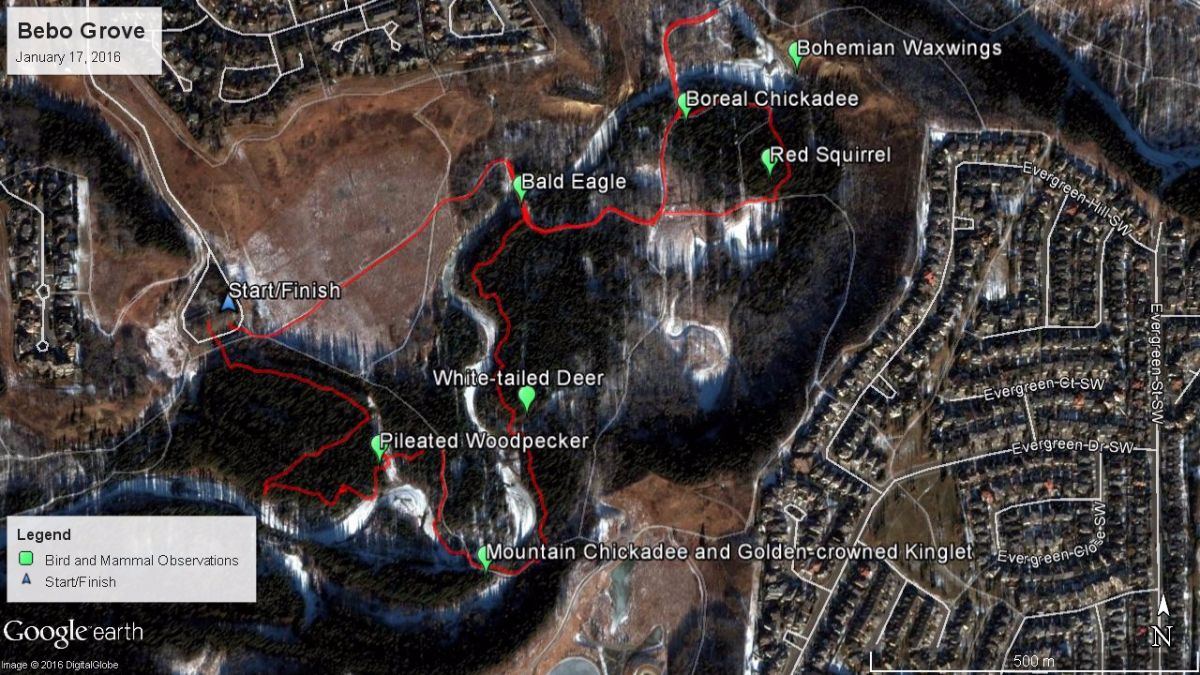
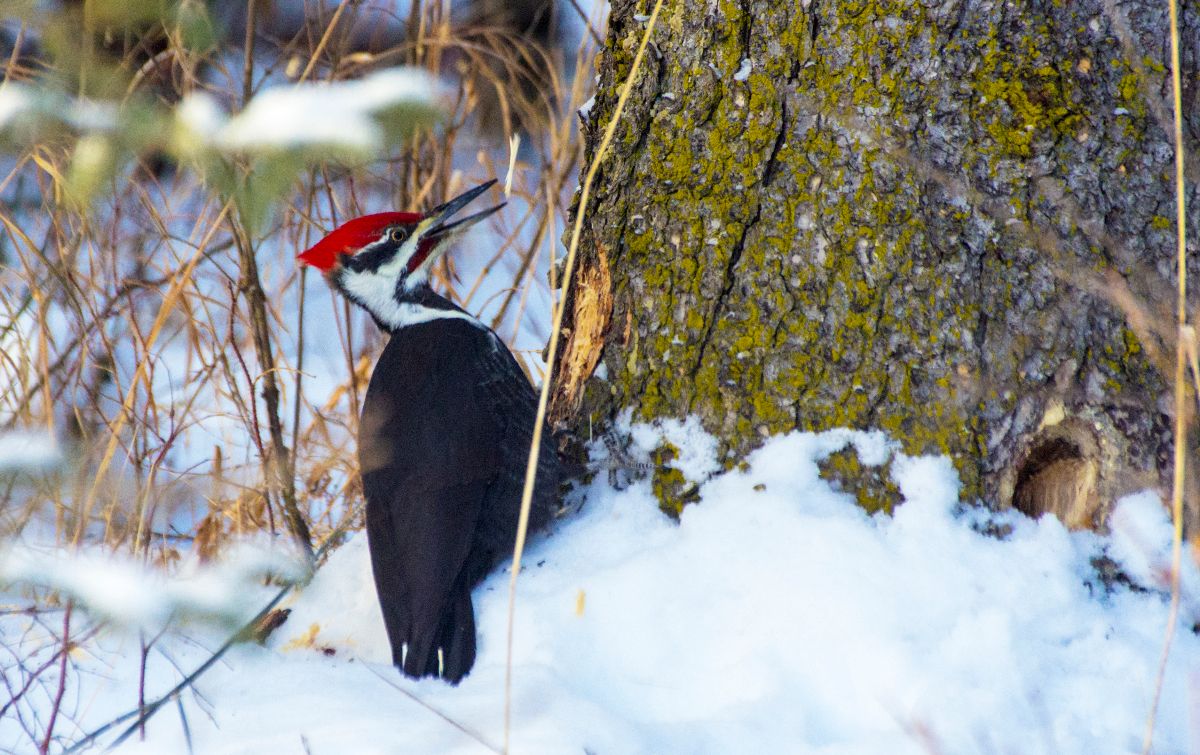
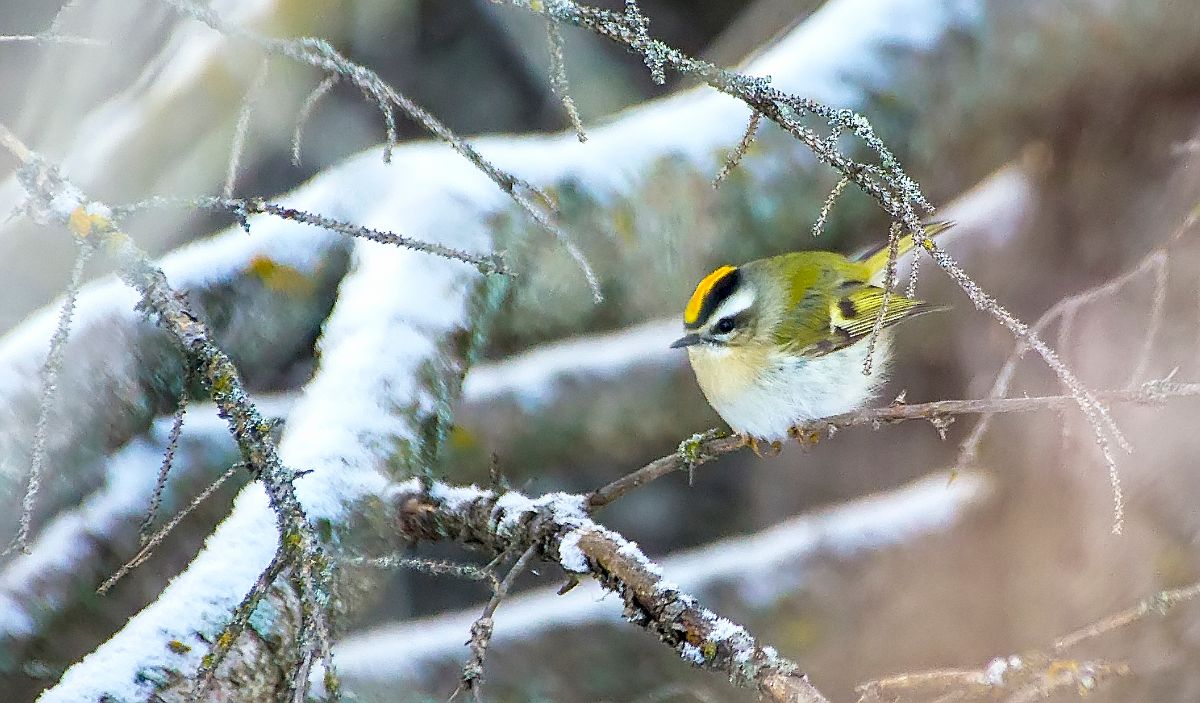
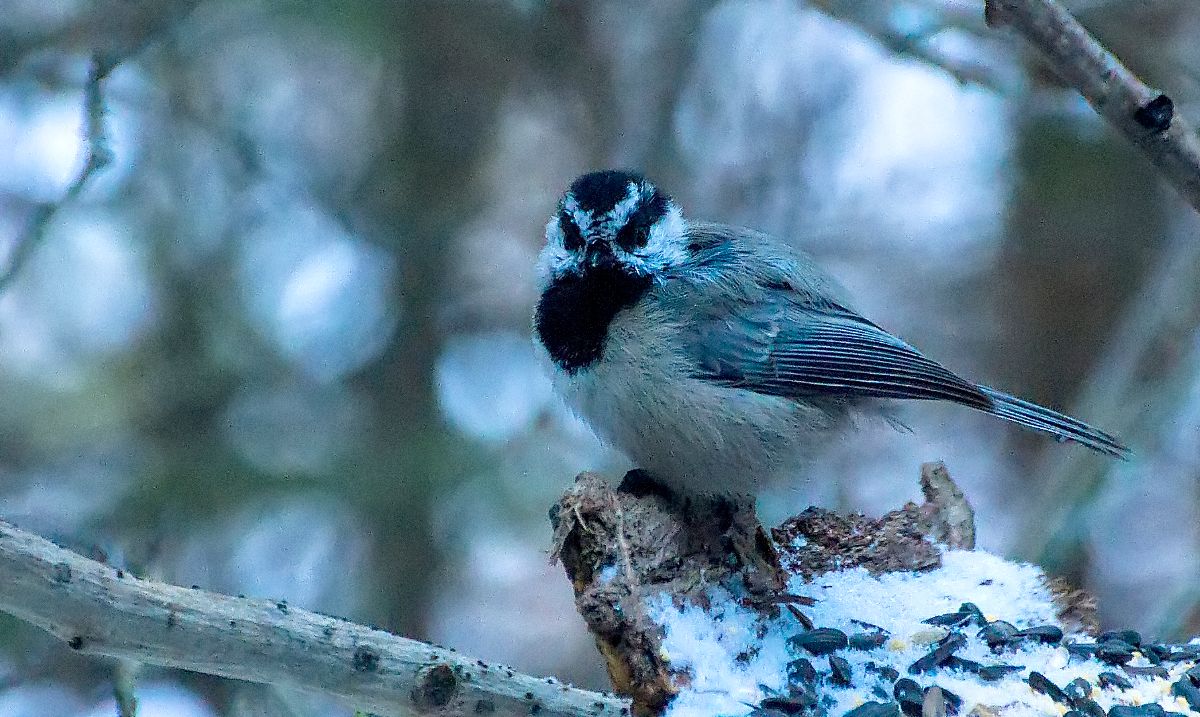

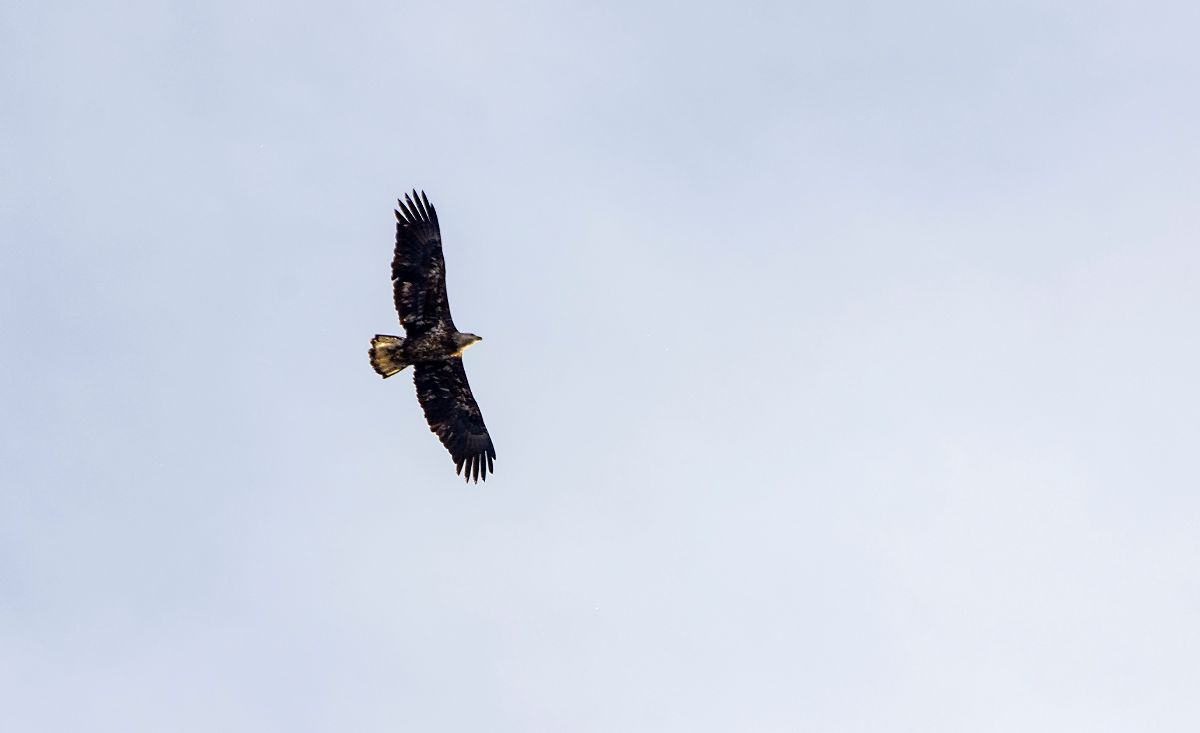
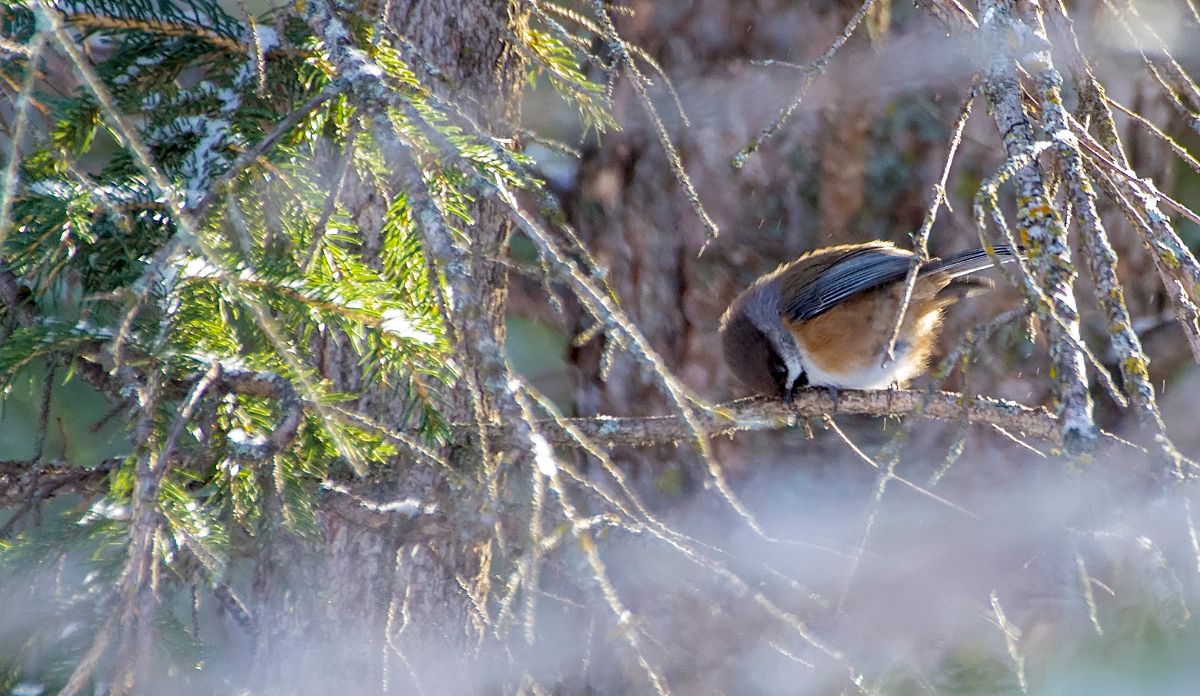


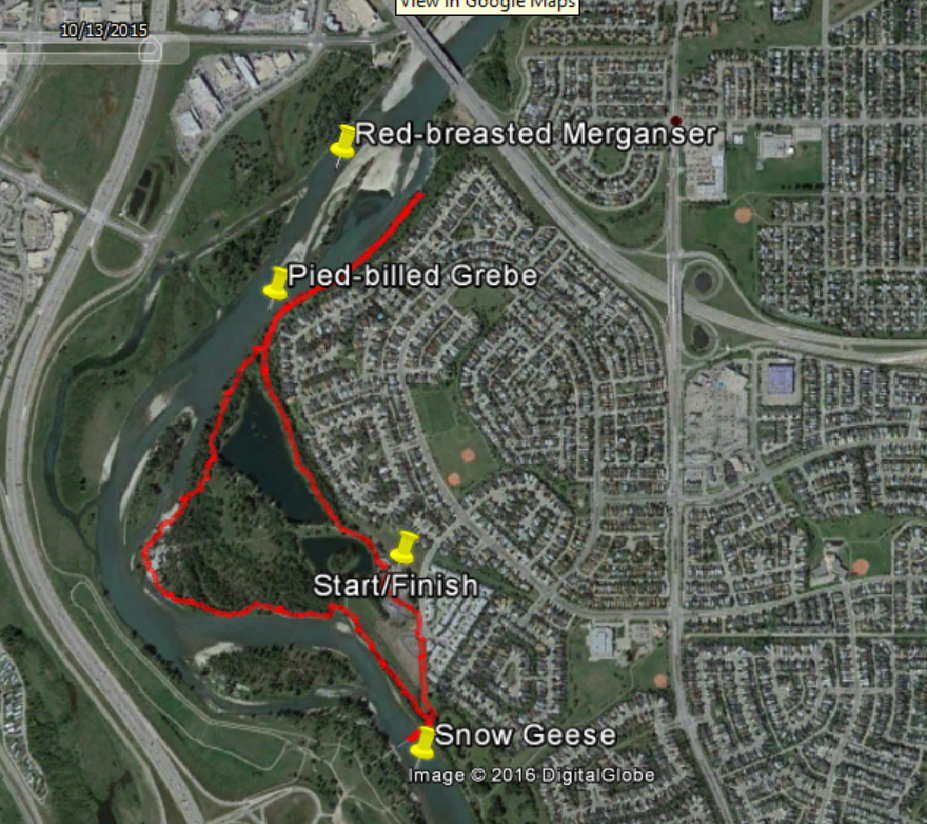
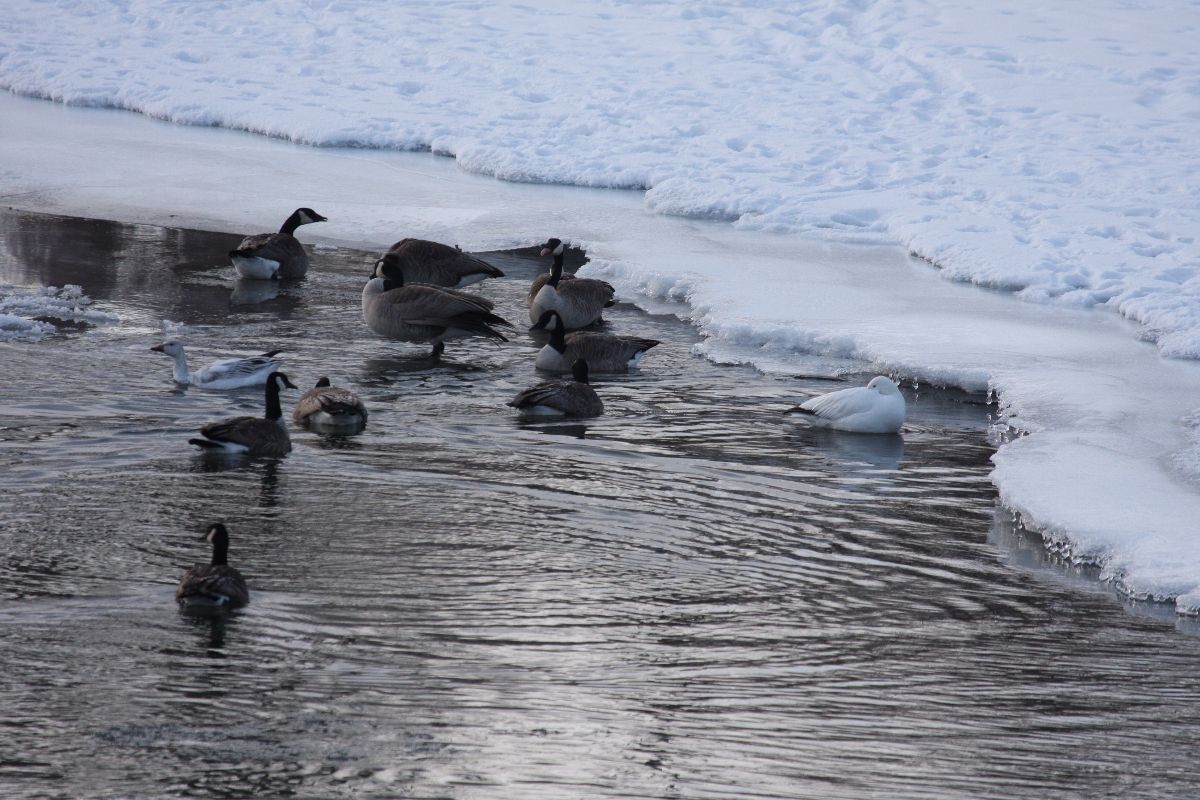
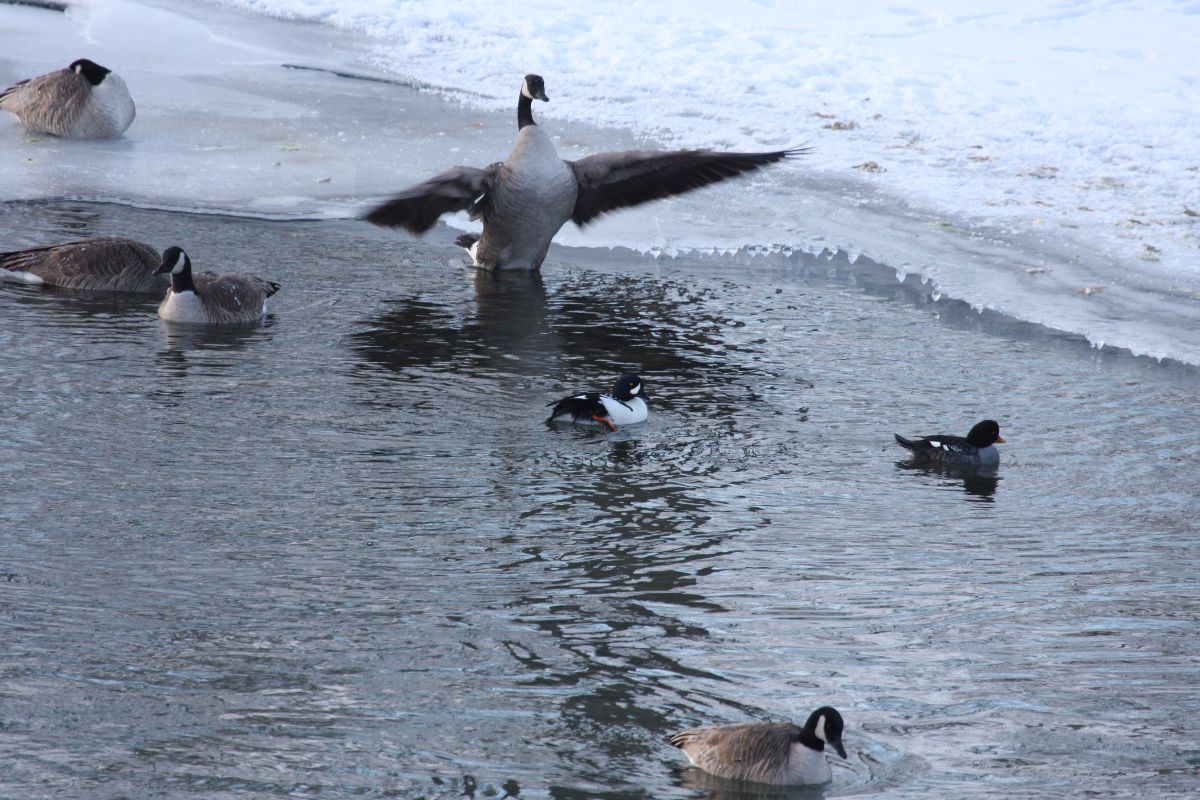
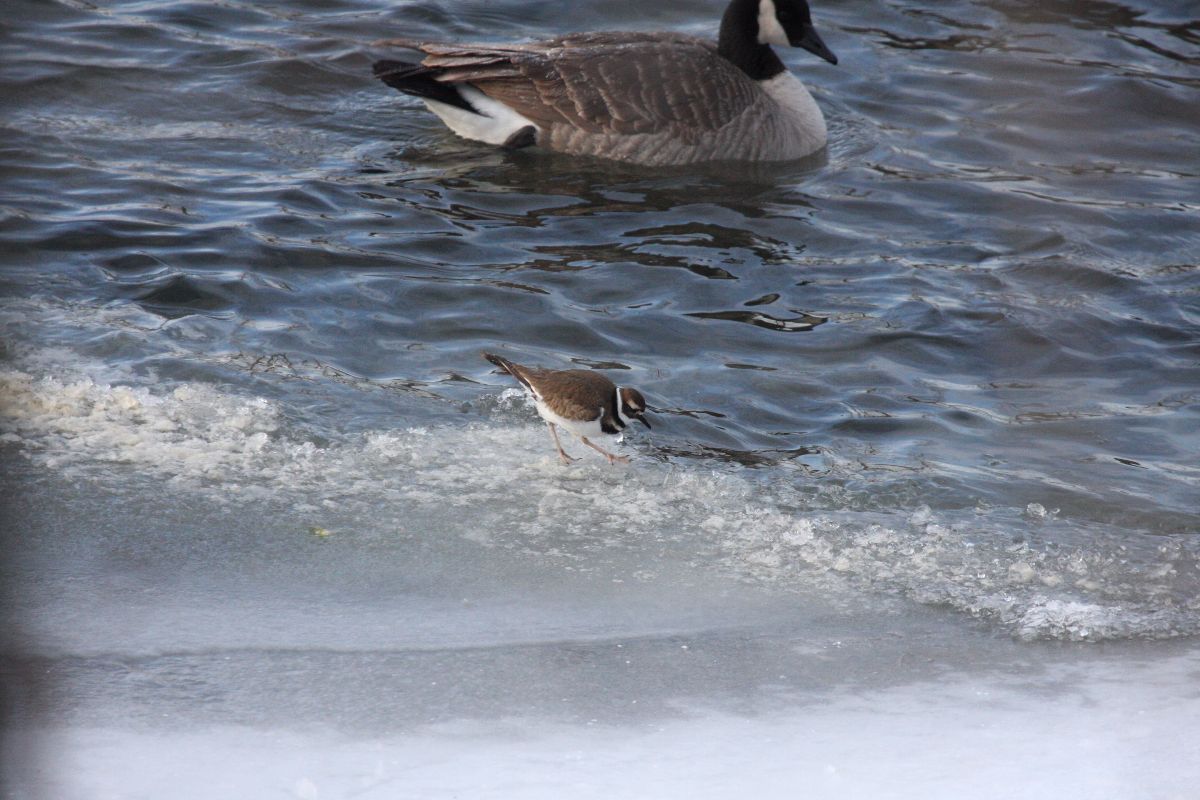
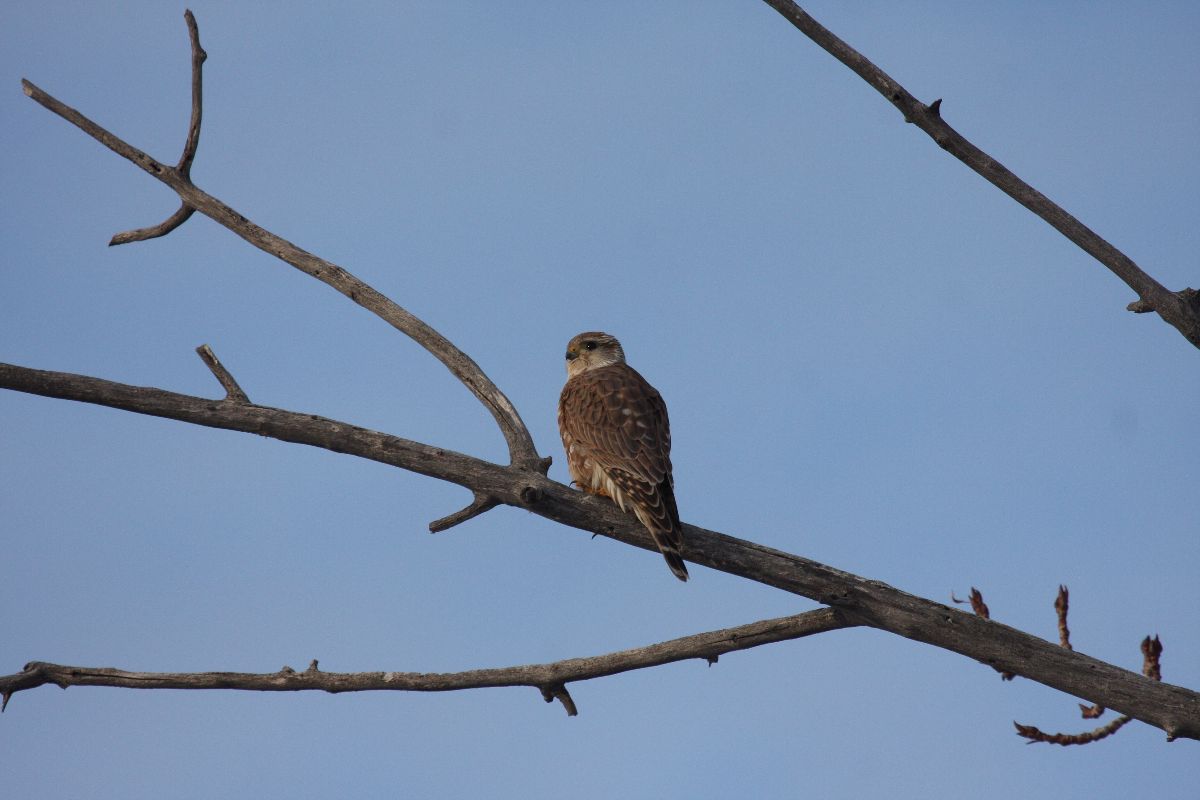
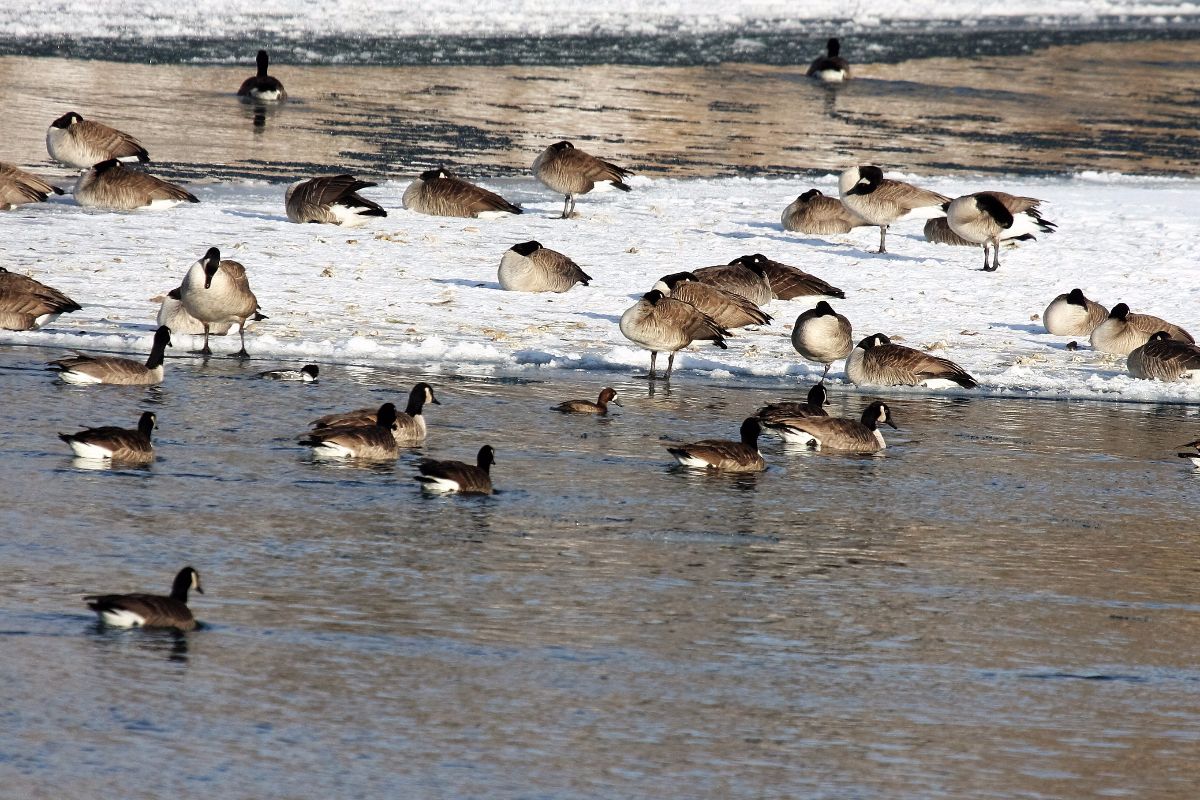
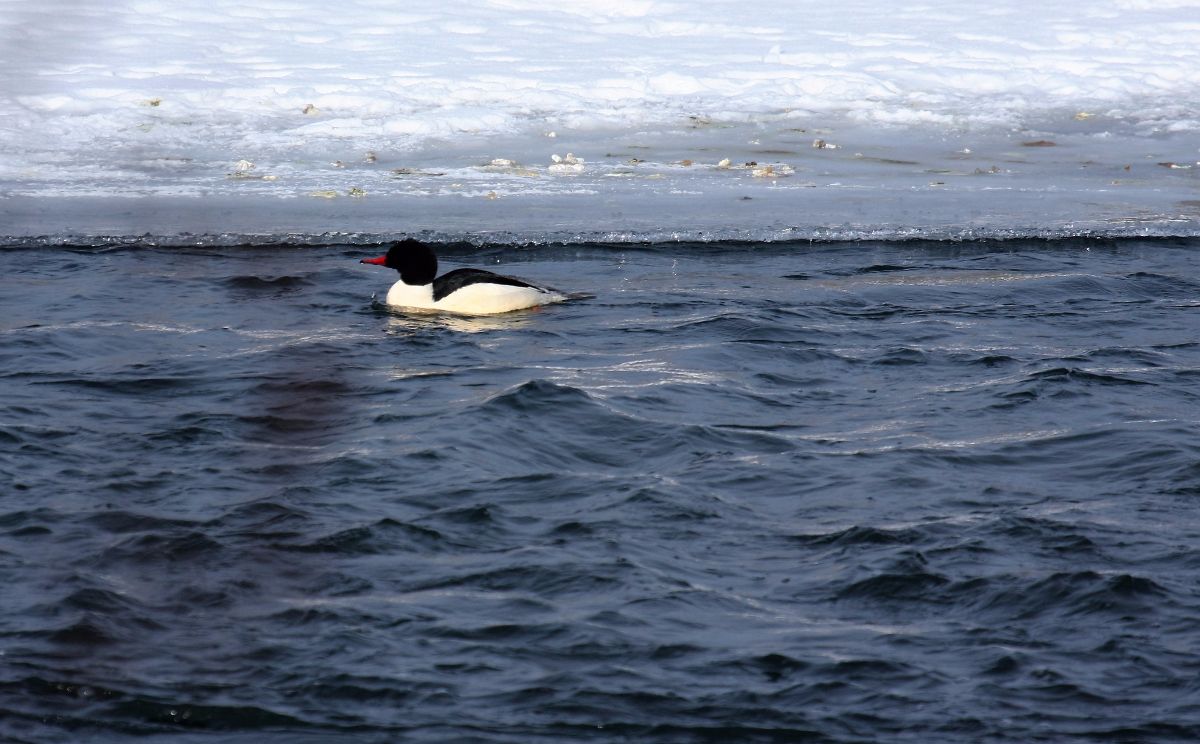
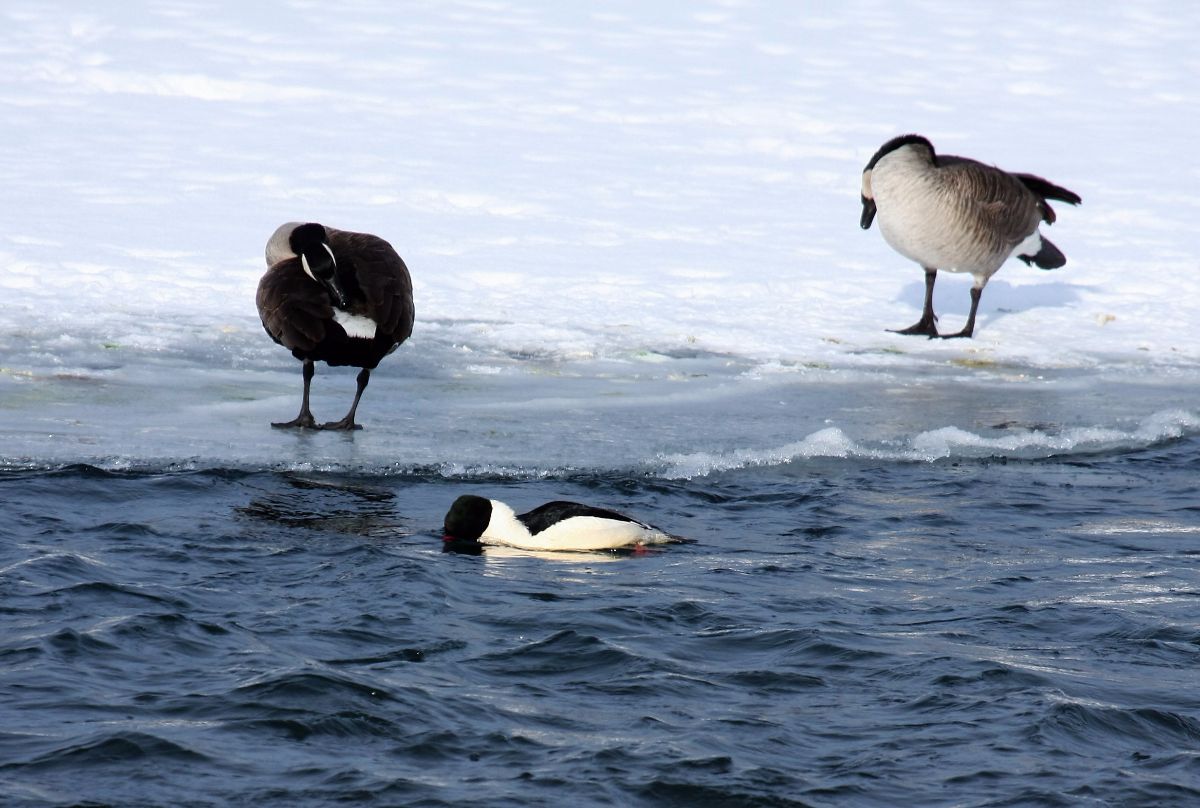
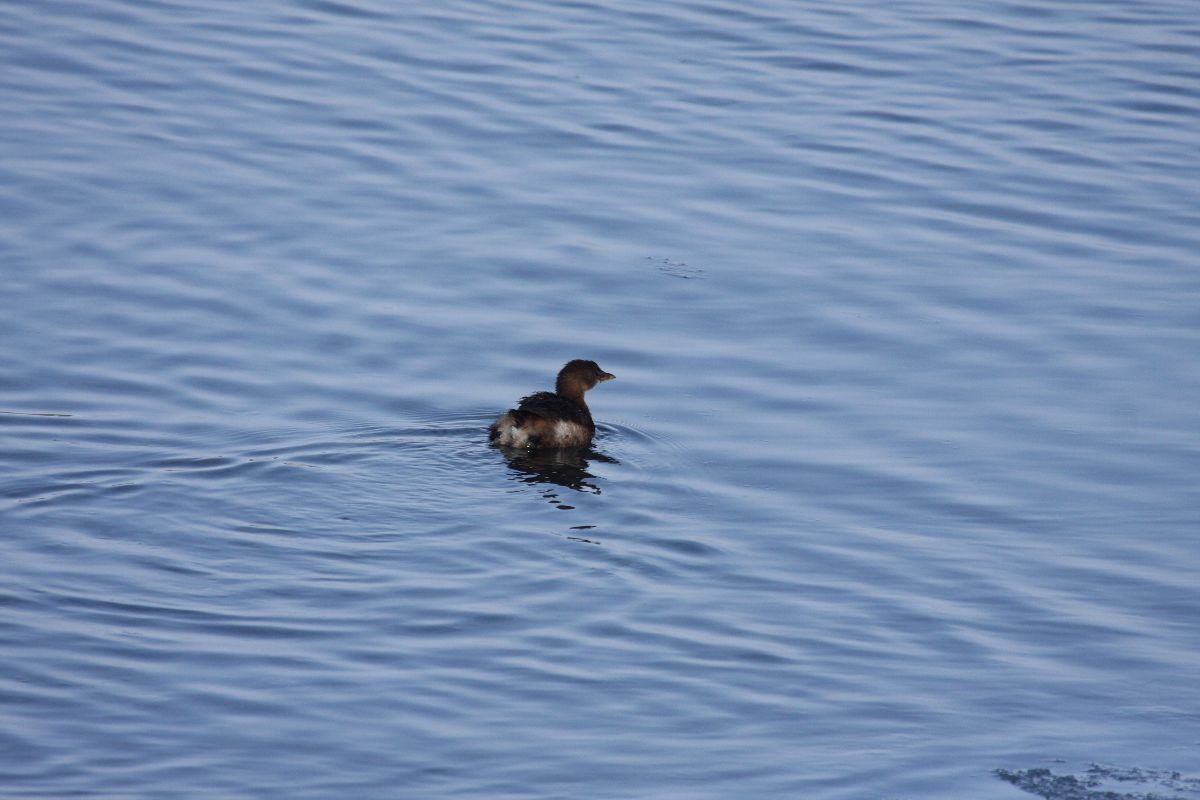
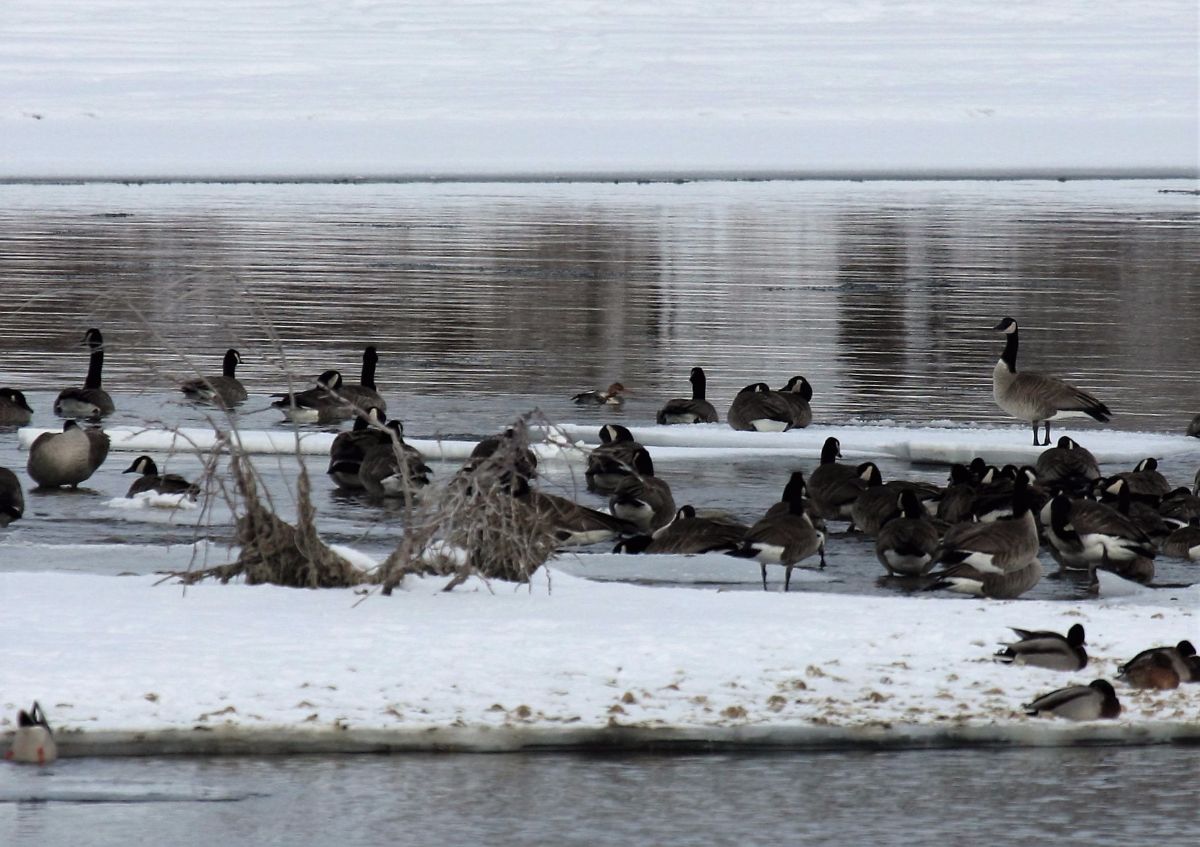
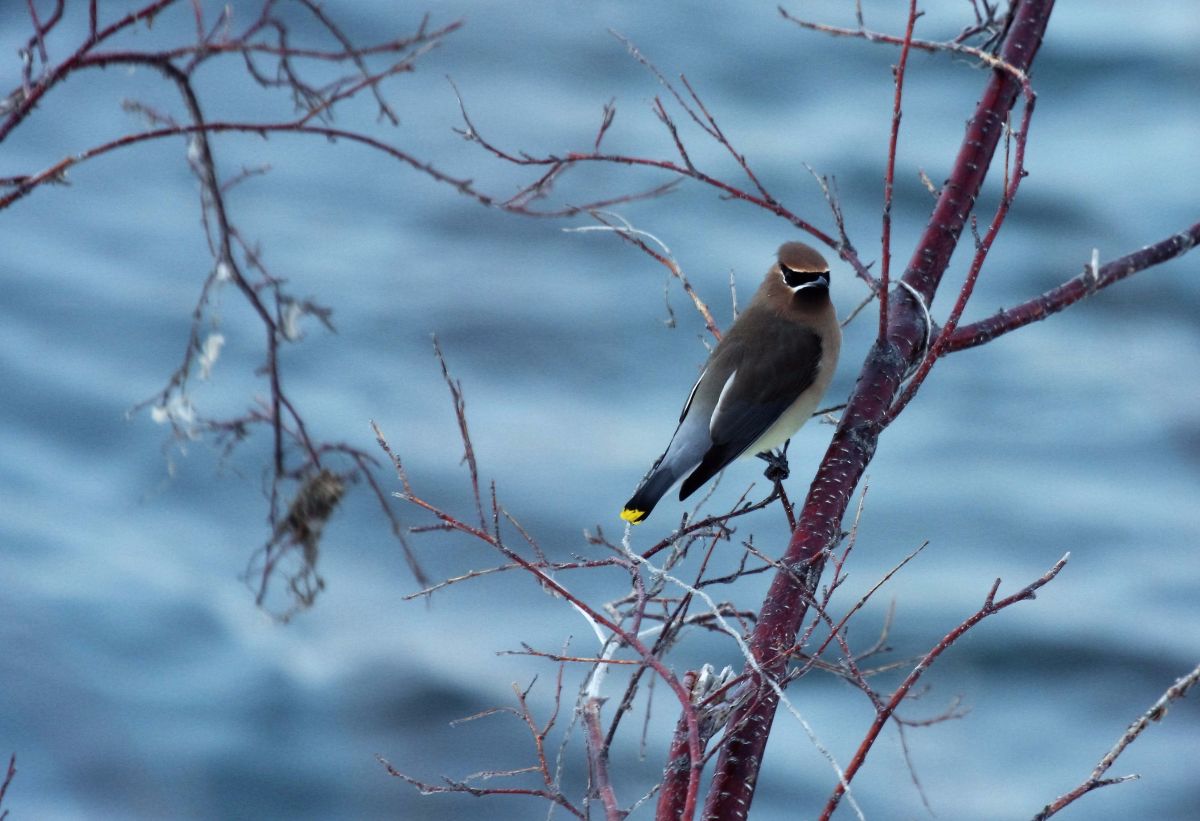

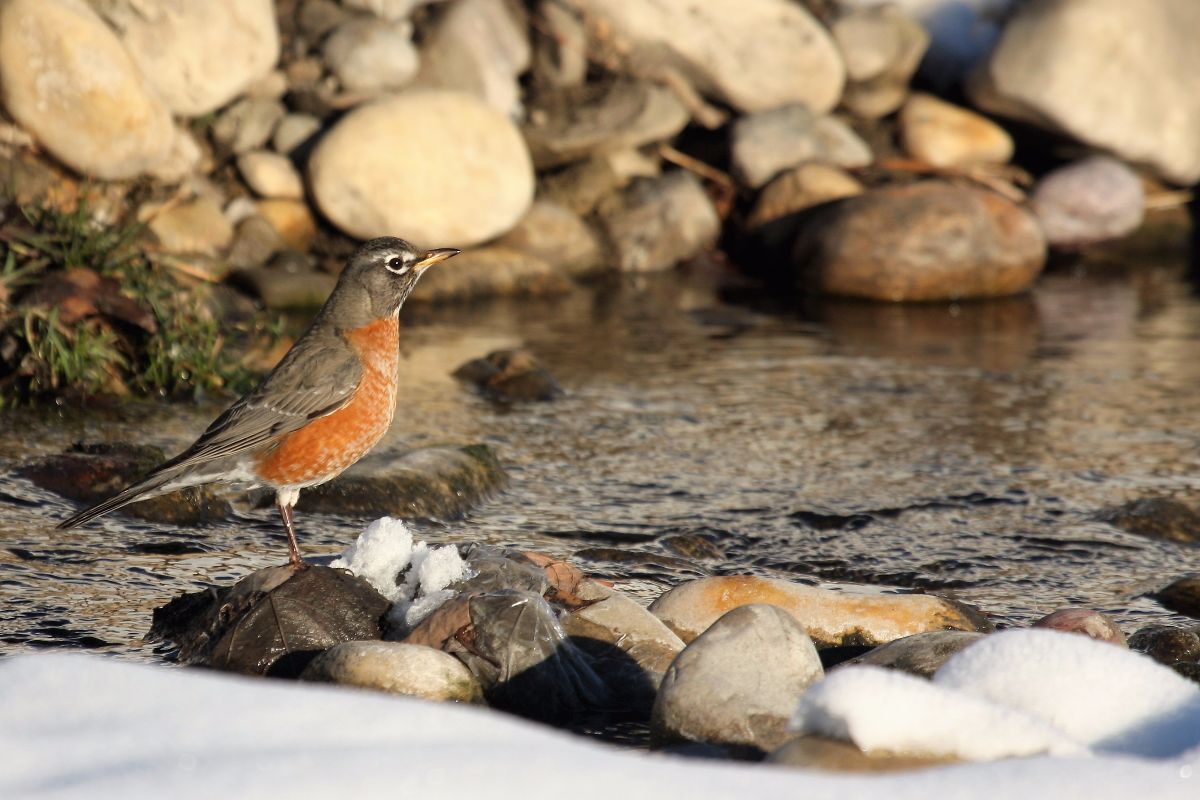
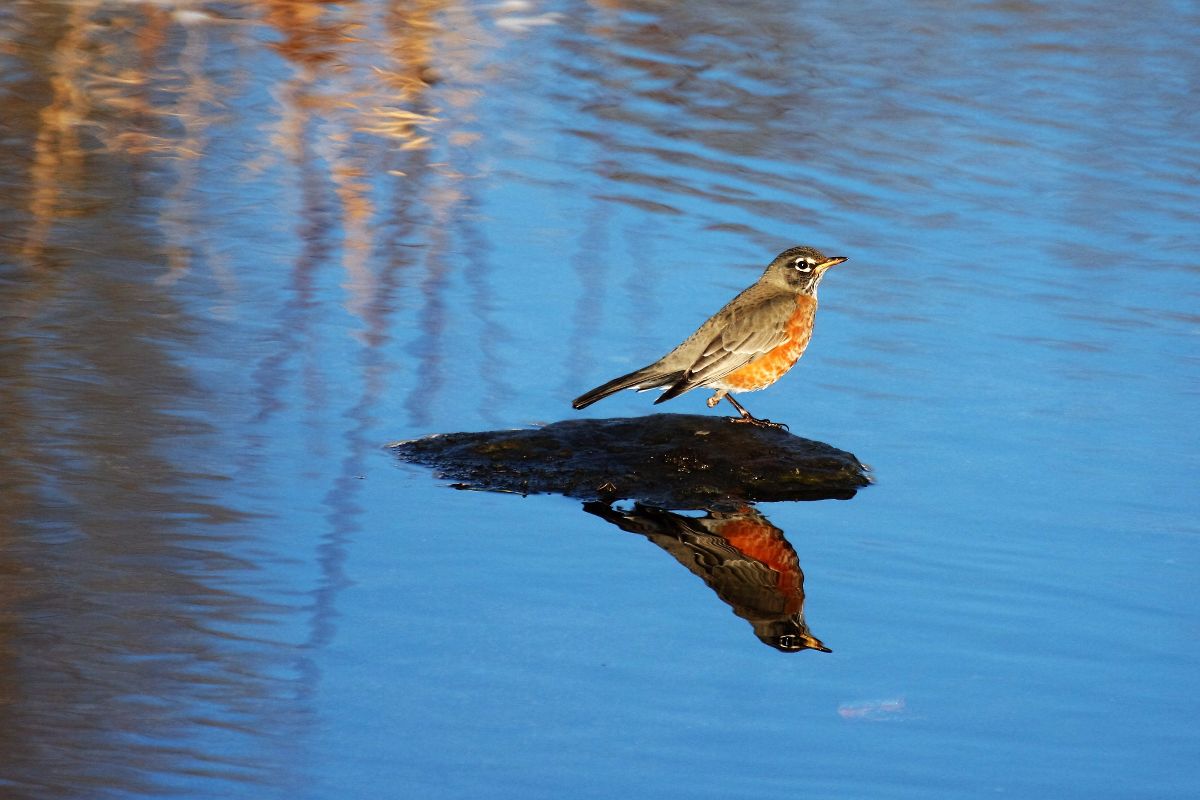
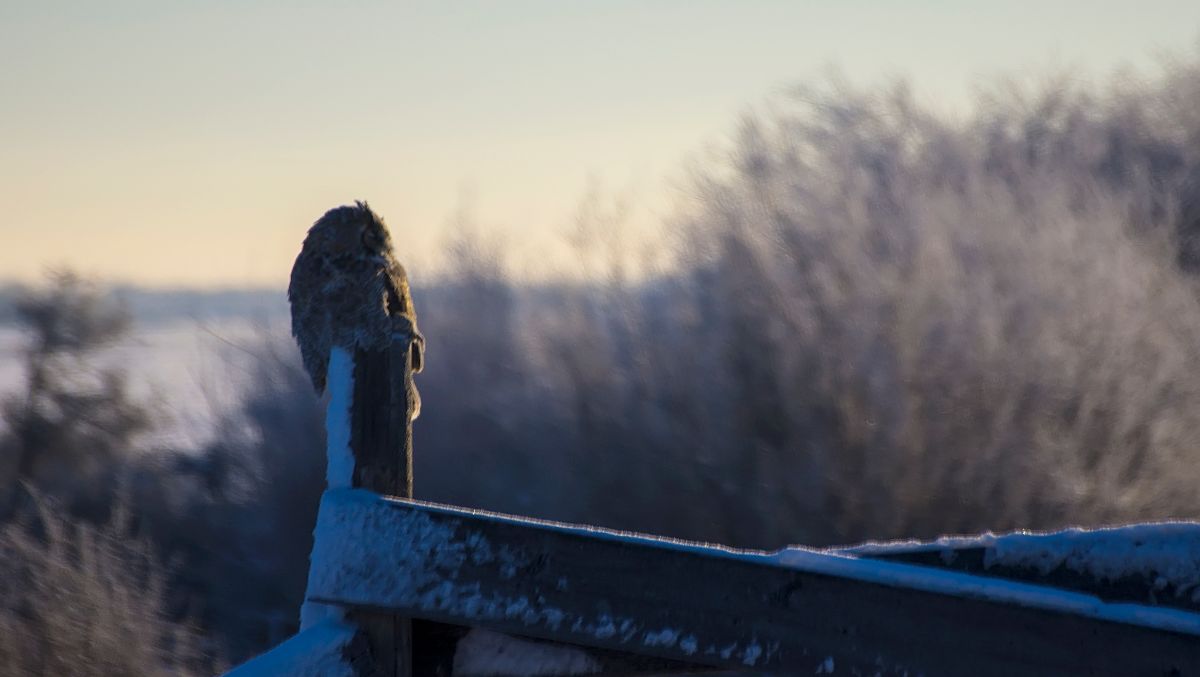
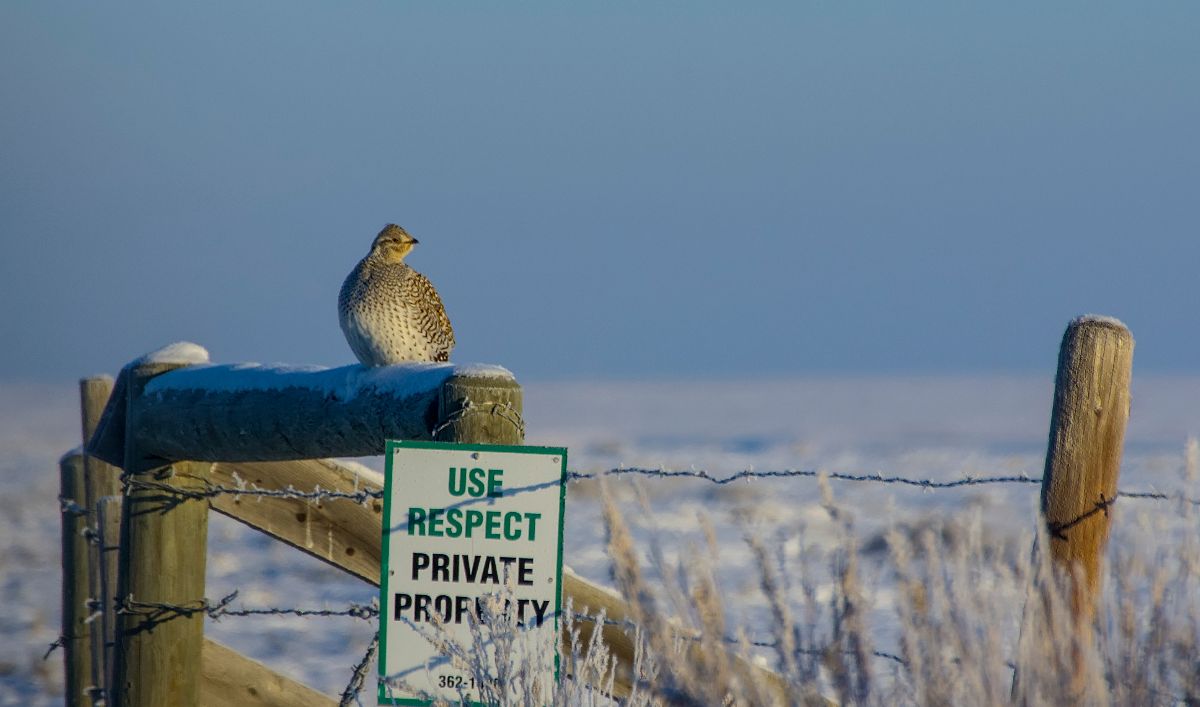
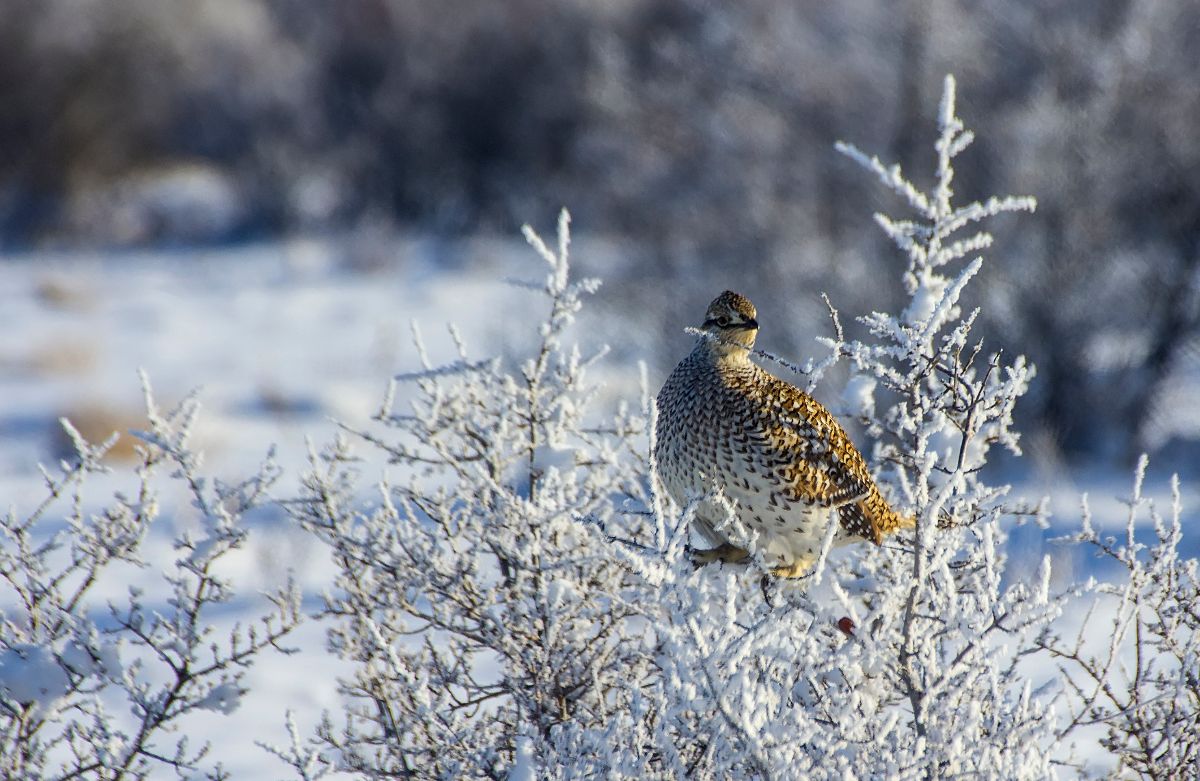
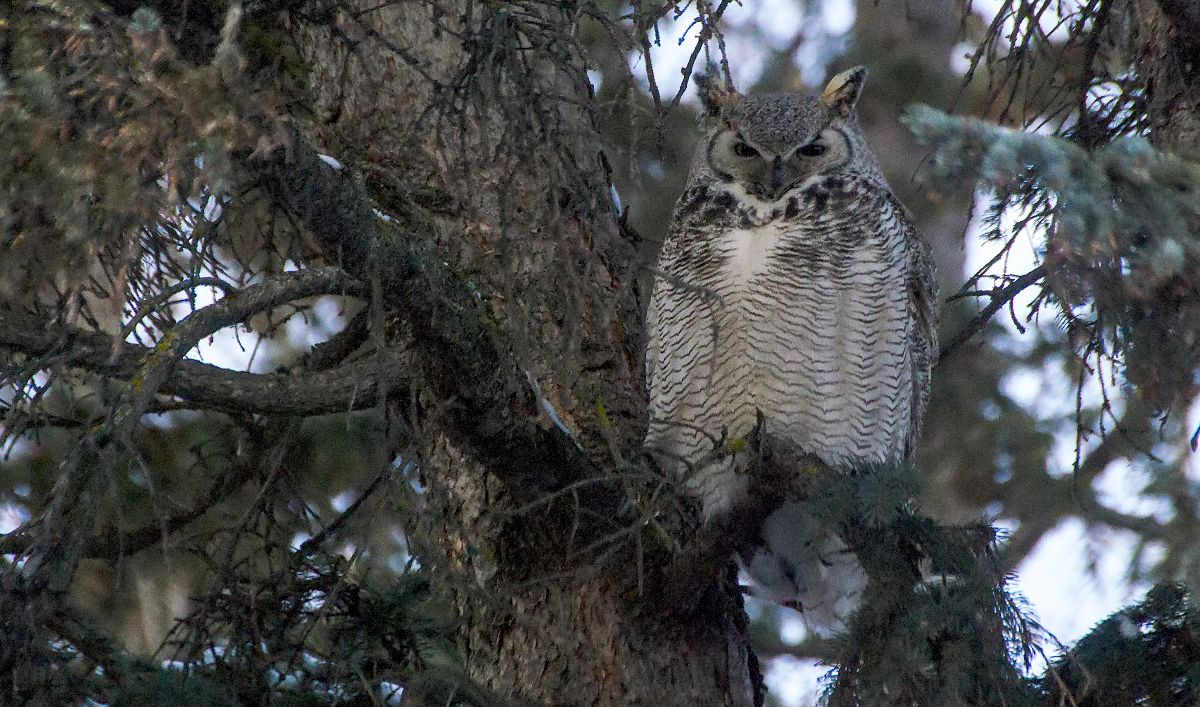
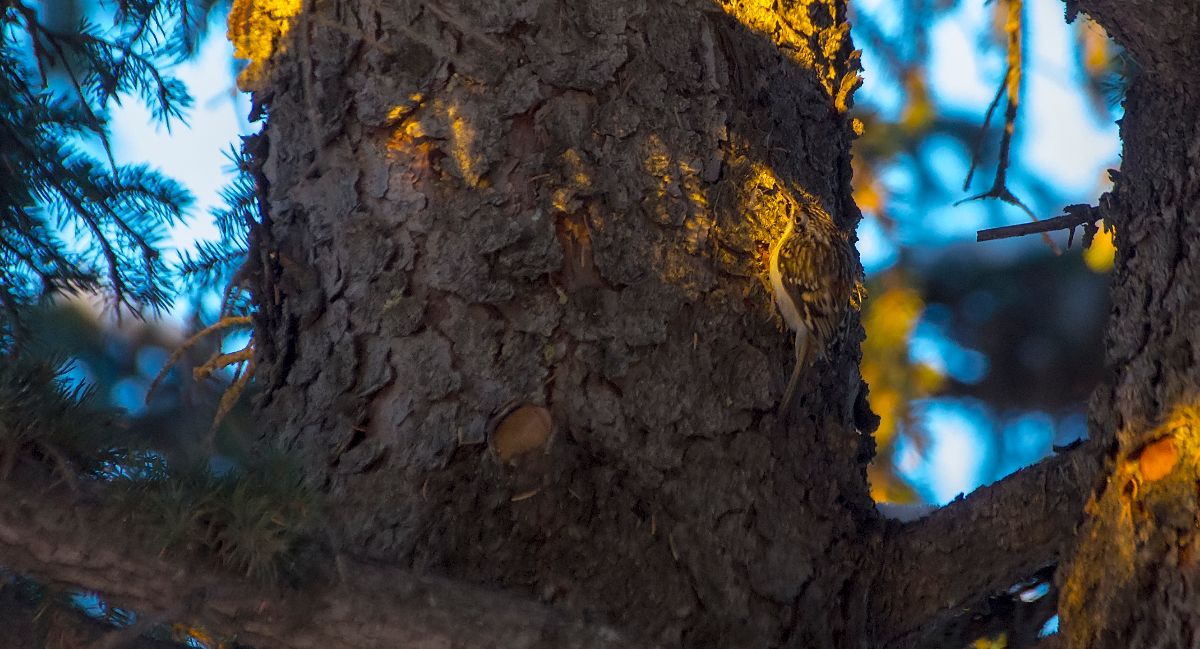
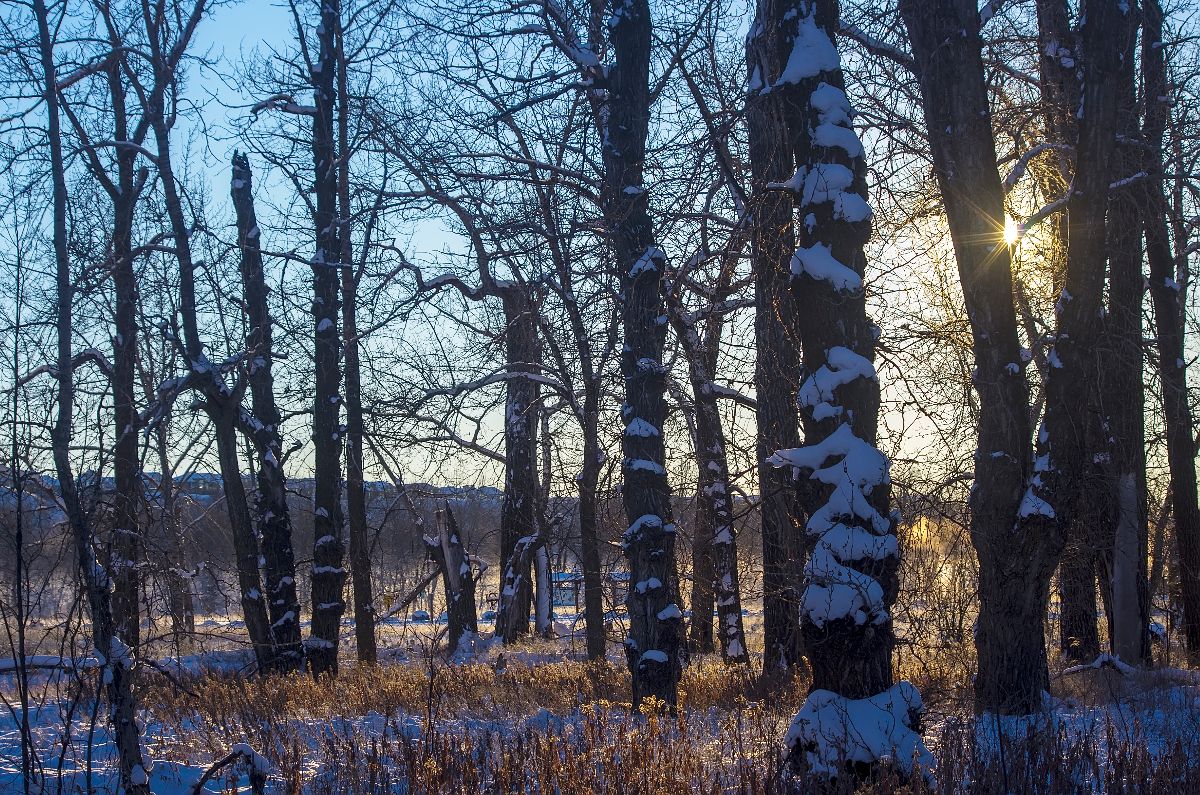
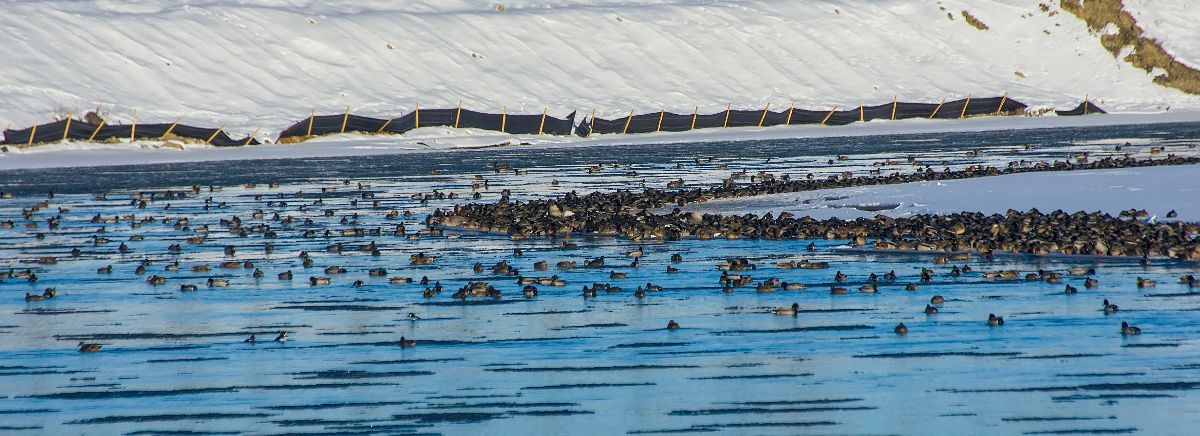
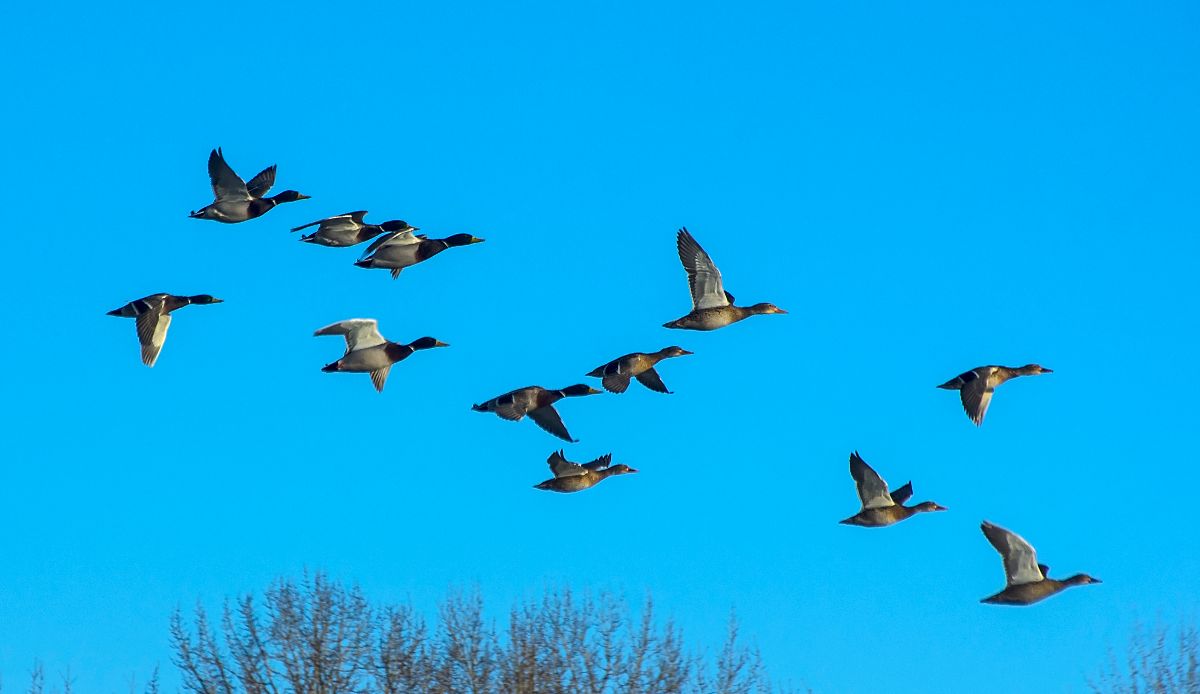

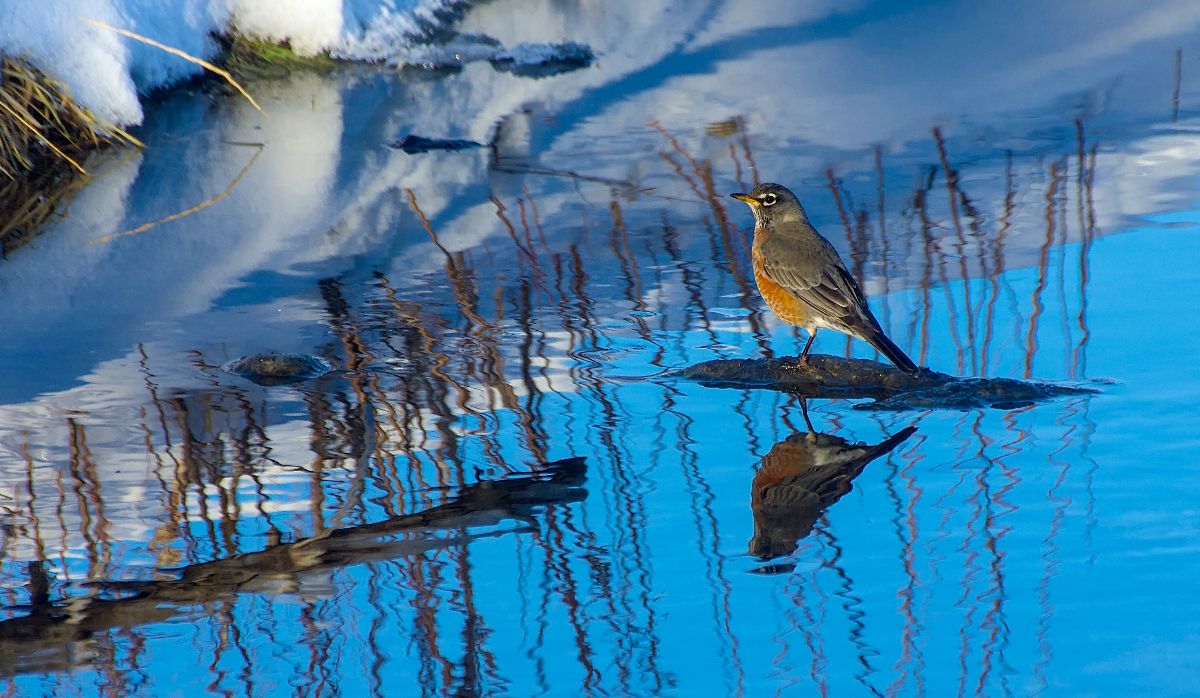
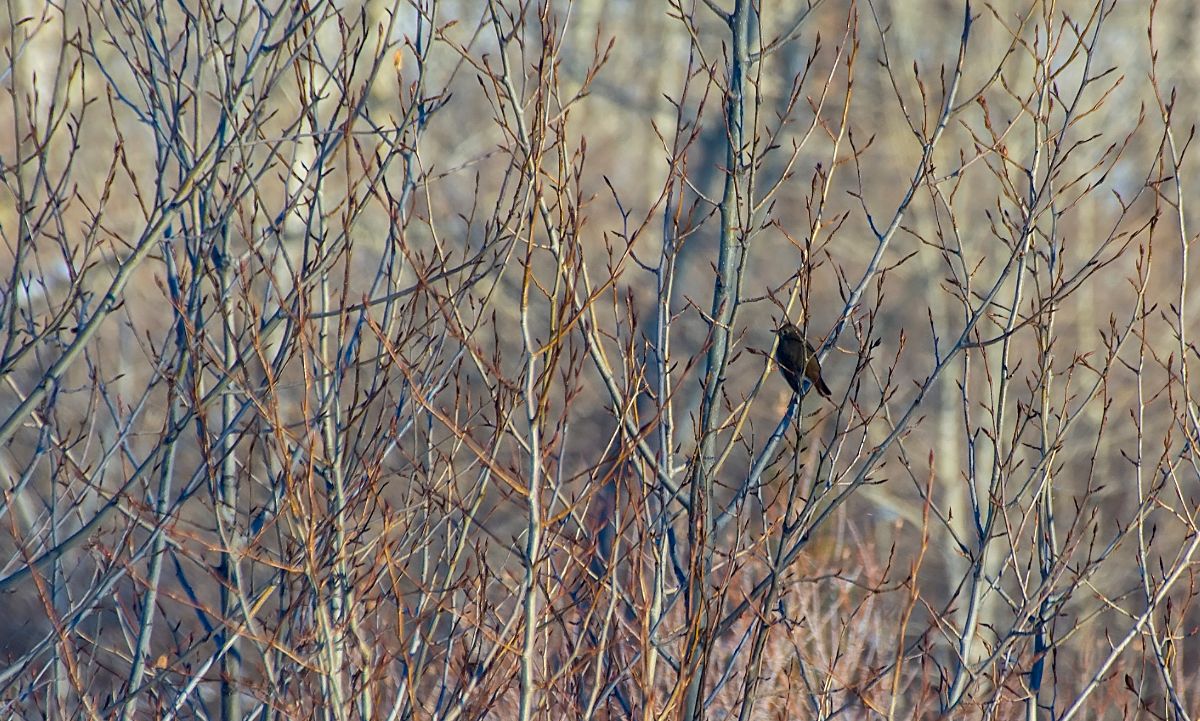
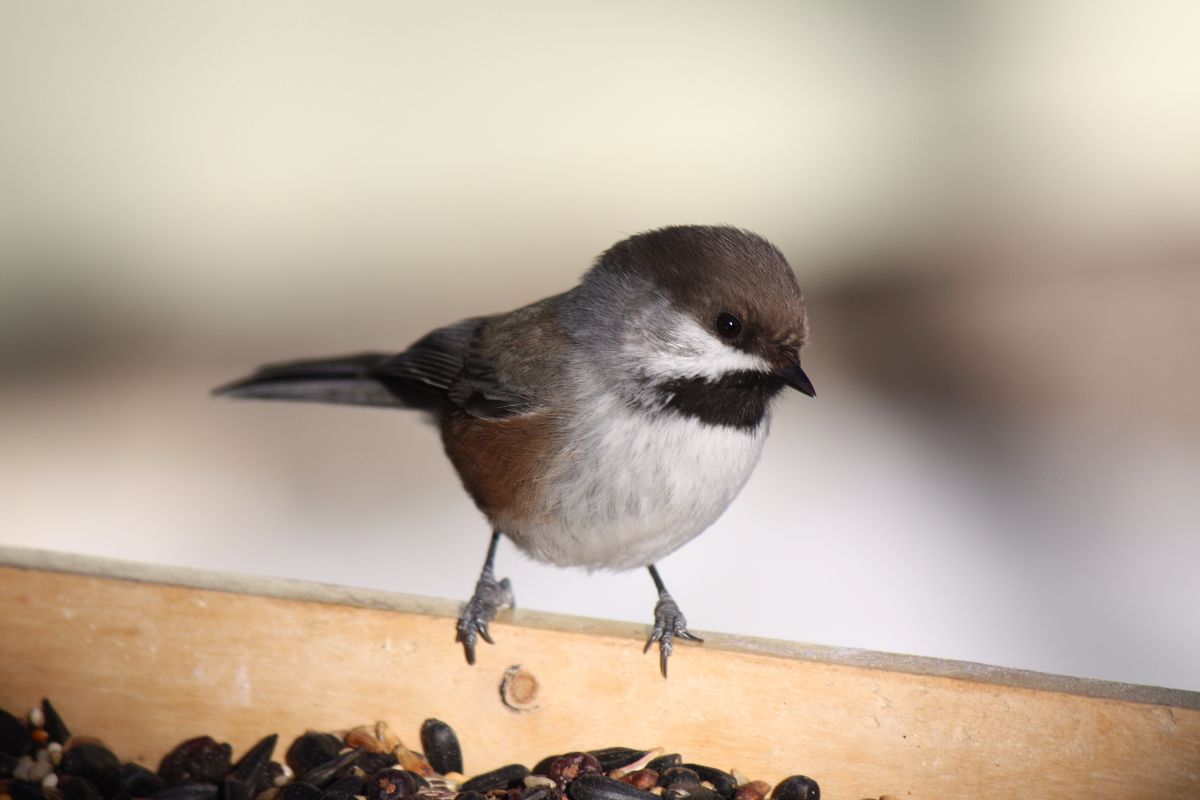
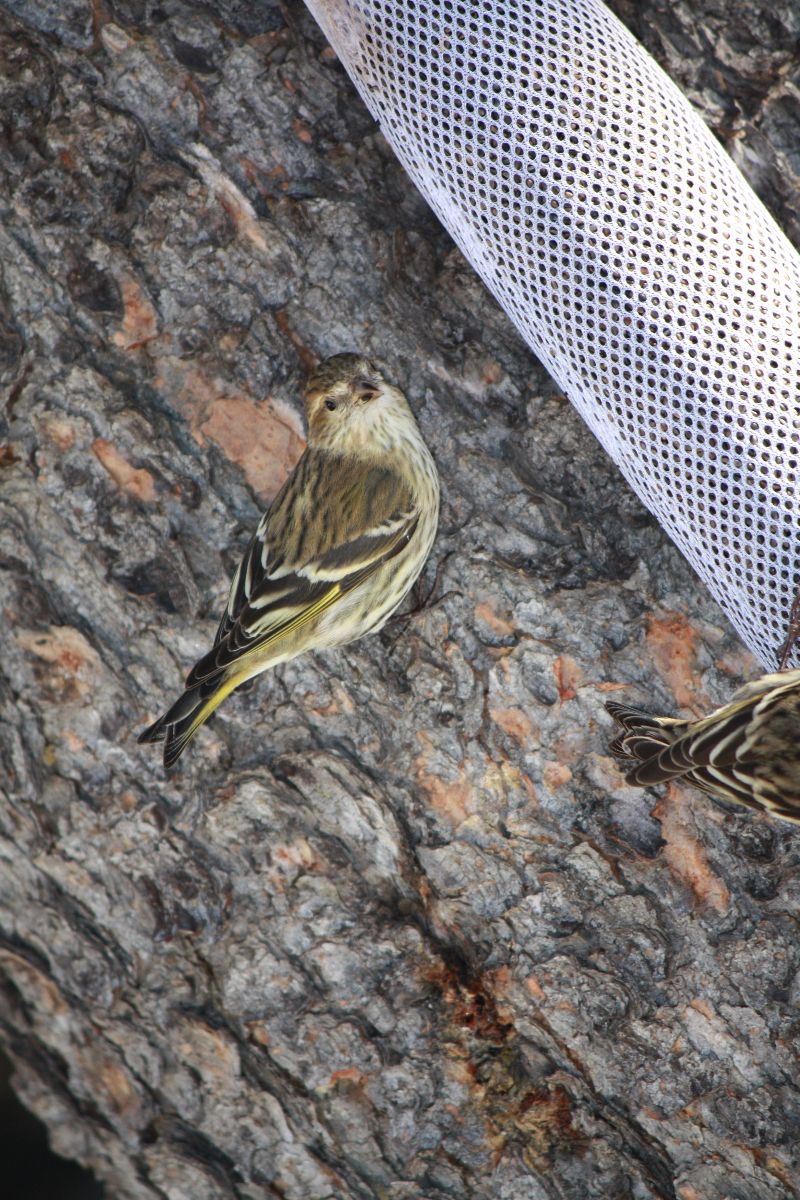
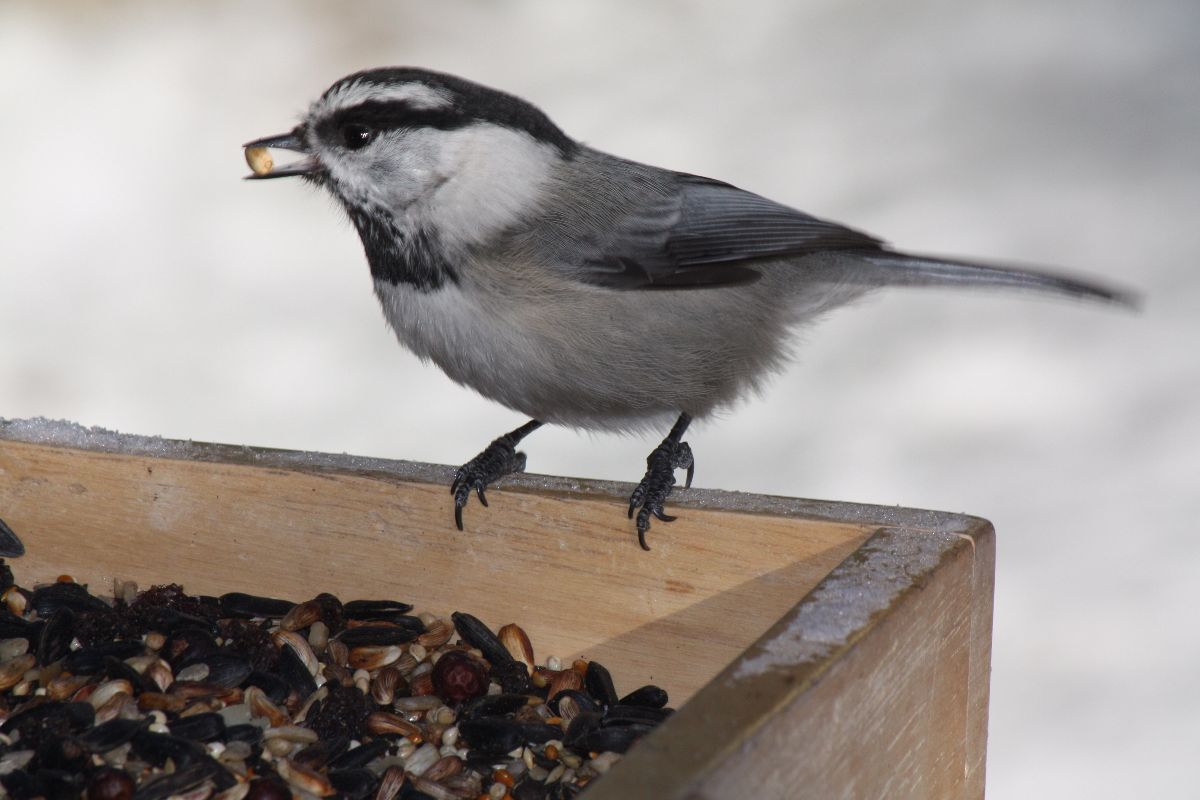
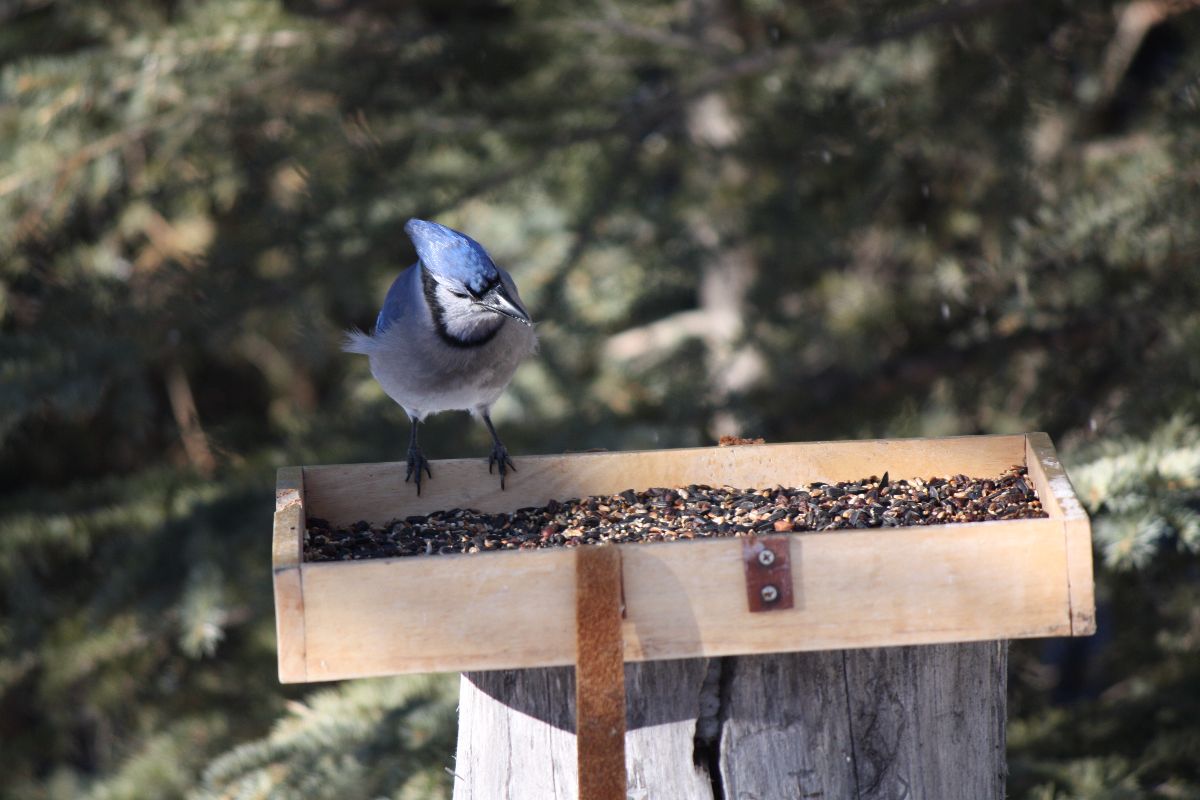
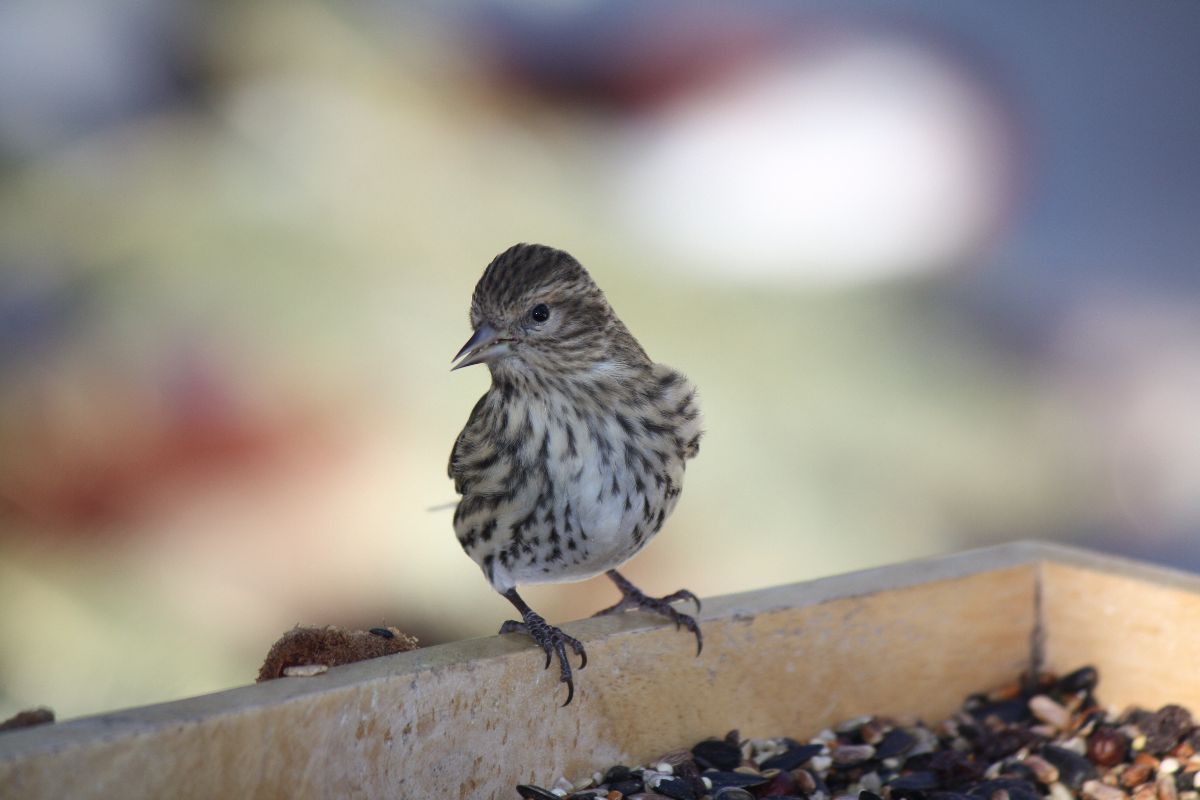
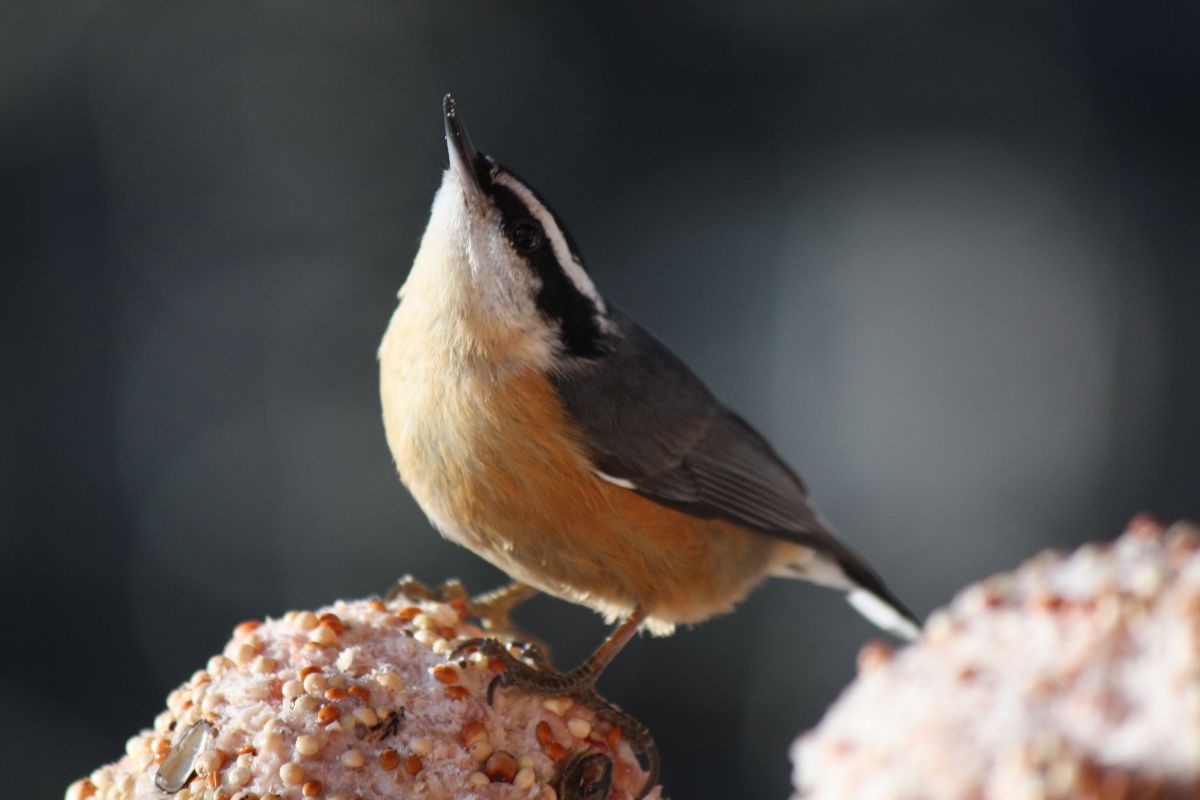

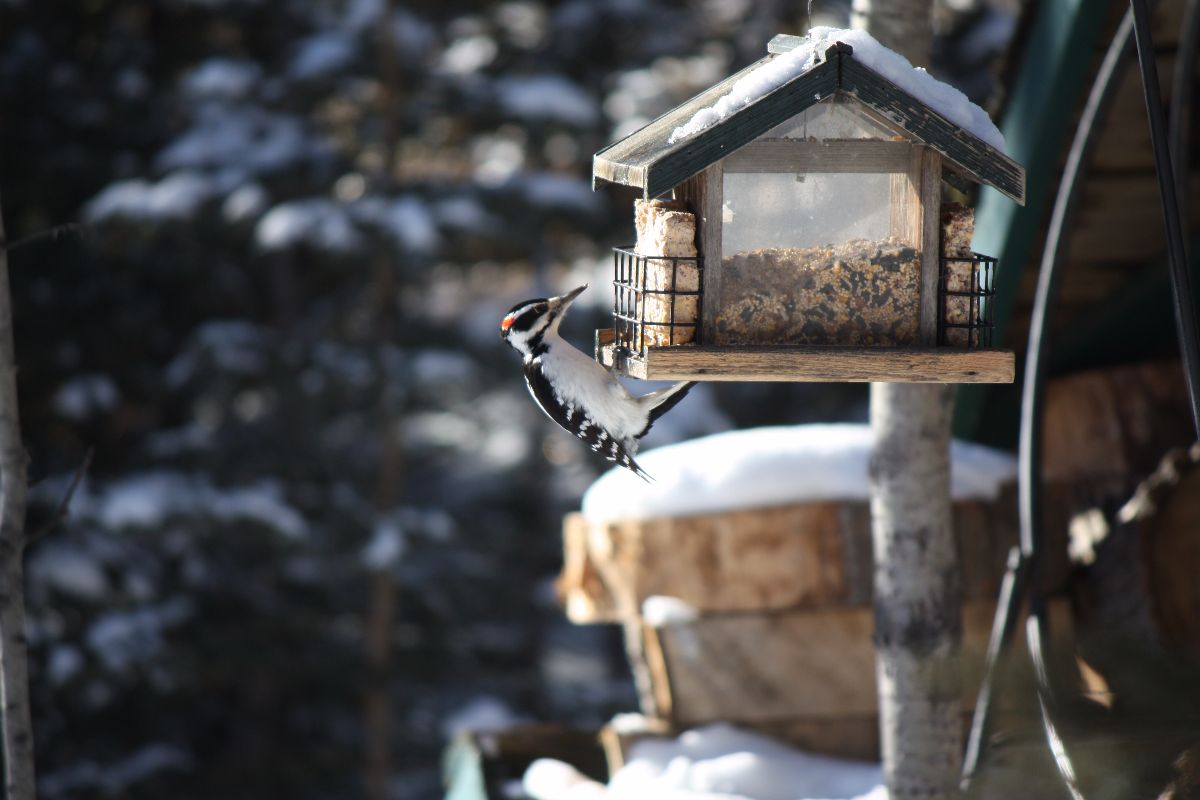











 Golden-crowned Kinglet in the setting sun.
Golden-crowned Kinglet in the setting sun.

